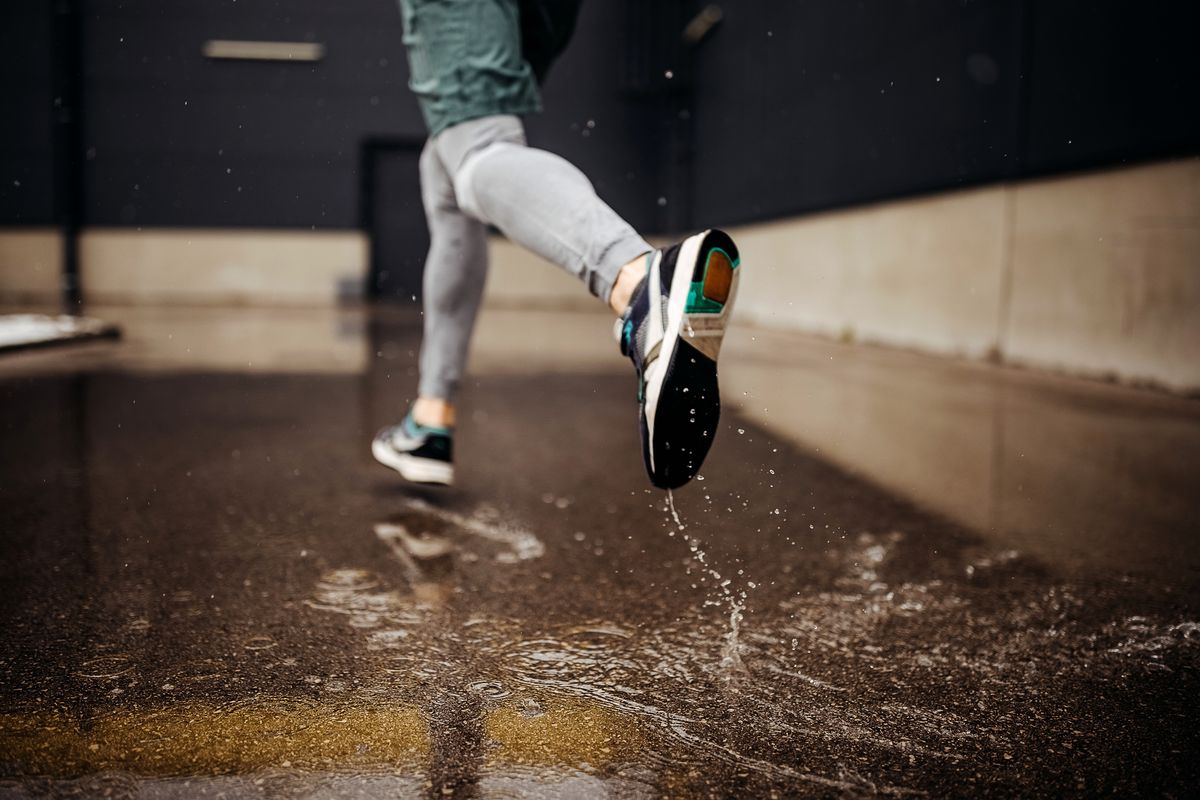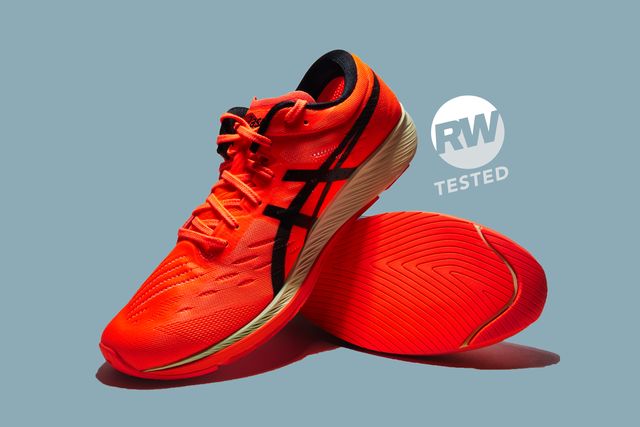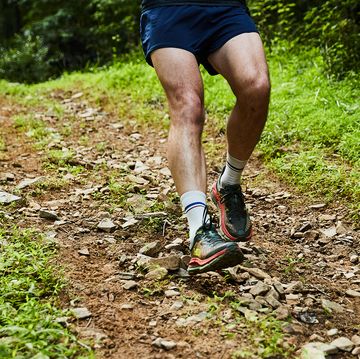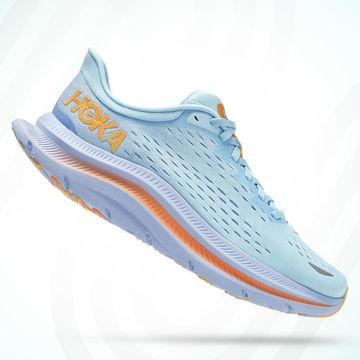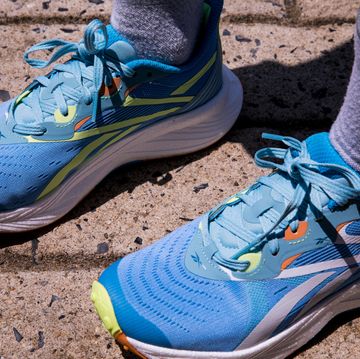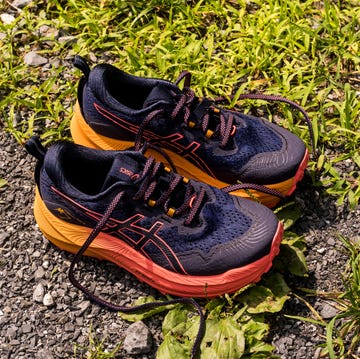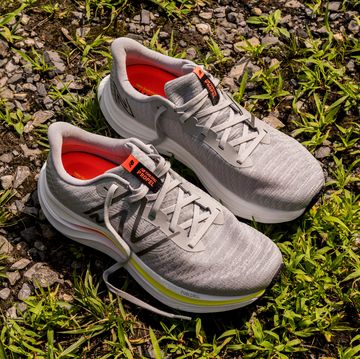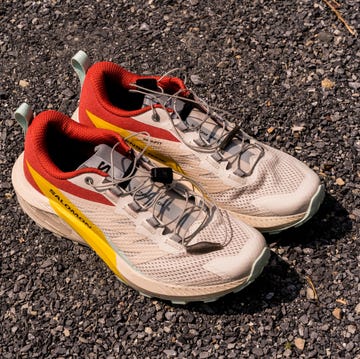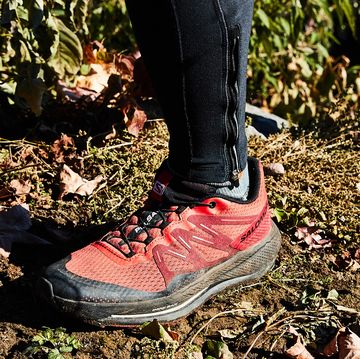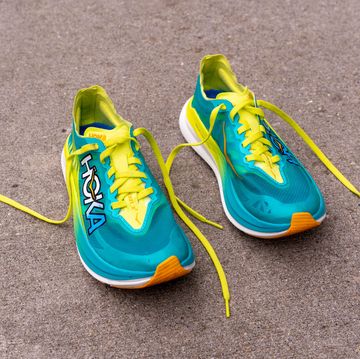There’s nothing more dispiriting than hearing a forecast of rain for your race day. Choosing appropriate gear is a must for any race, but your choices are especially crucial in wet conditions.
At my recent 10-mile race, the rain started coming down at mile five. I had opted for the Saucony Endorphin Elite, and going into the race I worried whether the shoes would be slippery and unstable on a wet road surface, based on notes from my friends and coworkers who’d raced in them before me. But in the end, my biggest footwear issue was the squeaky sound and the soggy insoles making my every step truly count as soon as I stepped into the first puddle.
While I still love my shoes, I decided to investigate other options for my next race. Who better to ask than the RW test team? Racing in the rain isn’t likely to be totally comfortable no matter what’s on your feet, but to improve the experience even a tiny bit, here are the pairs the team recommends:
Asics MetaRacer: This shoe actually has a drainage port at the toe to let water flow out when you splash through deep puddles. Asics is phasing out this model, but I’d love to see that feature in more of its racing shoes.
Asics MetaSpeed Edge+: This past fall, I hopped in a half marathon on a winding, hilly course with wet pavement, potholes, and a railroad crossing. Race morning was still a bit drippy from rain the night before and our route followed slick, leafy country back roads. My Asics felt sure-footed the whole way. The outsole borrows the same rubber compound that the brand uses for its trail shoes. So while the tread pattern itself is fairly smooth, it has enough of a tacky feel to keep you planted through toe-off. I don’t love the upper—mostly because it doesn’t stretch enough for my wide feet—but that snug fit does lock down the midfoot.
VJ Spark: For the obstacle course racers and trail racers out there, VJ uses a special butyl rubber outsole that grips better than nearly any other shoe we’ve tested when it comes to slippery rocks and mud. Though the brand has newer shoes that use the material, the Spark is the one I’d pick for a start line. Yes, all that grippy rubber puts it a smidge on the heavy side for a racing shoe, but it’s fast and nimble on terrain that you’d otherwise have to slow to a walk for. Plus, given the fact that the rest of the shoe is fairly simple—no high-powered bouncy foams, no midsole plates, and just a light mesh upper on top—it’s more affordable than a $200+ pair of super shoes.
Puma Deviate Nitro Elite 2: I raced in the Elites in this year’s Boston Marathon. They feature a spoon-shaped carbon plate that helps with propulsion, responsive Peba foam, and a PumaGrip outsole. The bottom of the shoe has a textured teardrop tread pattern that will keep you in the upright position at a race pace—even in unpredictable New England weather.
Brooks Catamount 2: This is the second iteration of the Catamount; the first was released in 2020. It has a new SkyVault plate sandwiched into DNA Flash foam—the same foam as in Brooks’s road racing shoe, the Hyperion Elite. The trail shoe is lightweight and has a little snap because of the plate, making it ideal for trail racing and ultras. It has a hydrophobic outer layer on the mesh upper to repel water.
Under Armour Velociti Elite: UA’s first super shoe has a Warp 2.0 mesh upper. It’s super thin, and while that’ll make your socks soggy, it doesn’t trap water and provides lots of ventilation for quick drying. During the winter, I raced through some slushy patches in a five-mile road race, and I owe the Warp 2.0 for not weighing me down.
Nike Vaporfly 3: The first Flyknit version of the Vaporfly 4% was no good in the rain. That shoe got sloshy. When the follow-up version, the Next%, came out, it had a ripstop-nylon-like upper that was far better. I wore it at a rain-soaked Vermont City Marathon and fared better than others who were still stuck with the Flyknit at the time. (The last thing you want to be doing is lugging around heavy shoes on race day.) The newest Vaporfly has an upper that’s nearly see-through, so this pair won’t get soggy in the rain either.
Hoka Mafate Speed 4: For wet trail runs, I like something that’s going to keep me on my feet. With a Vibram outsole with lots of grippy edges, these Hokas are just the thing. I wore them on a steep mountain race up and down wet ground and felt confident the entire time.
There’s a temptation to grab a waterproof shoe, like one with Gore-Tex, but remember that every shoe has a giant hole on the top (where you insert your foot). On heavy rain days, water will find its way in, so you also want it to be able to get out. With waterproof shoes, that doesn’t happen. And after you cross the finish line, get those shoes off, and dry them properly.
As senior newsletter editor, Pavlína Černá is the person behind all membership emails sent on behalf of Runner's World, Bicycling, and Popular Mechanics. When she doesn't edit, she writes; when she doesn't write, she reads or translates. In whatever time she has left, you can find her outside running, roller-skating, or riding to the beat of one of the many audiobooks on her TBL list.
Jeff is Runner-in-Chief for Runner's World, guiding the brand's shoes and gear coverage. A true shoe dog, he's spent more than a decade testing and reviewing shoes. In 2017, he ran in 285 different pairs of shoes, including a streak of 257 days wearing a different model.
Amanda is a test editor at Runner’s World who has run the Boston Marathon every year since 2013; she's a former professional baker with a master’s in gastronomy and she carb-loads on snickerdoodles.
